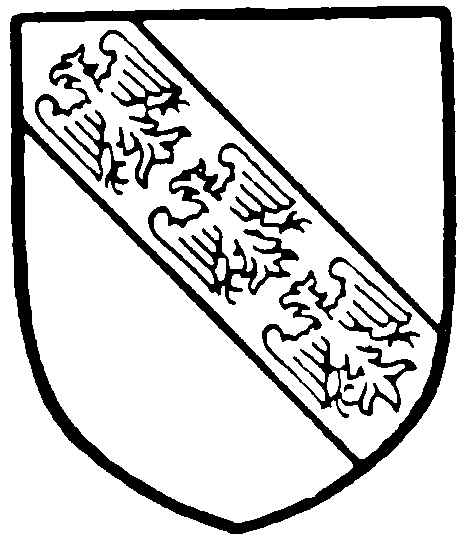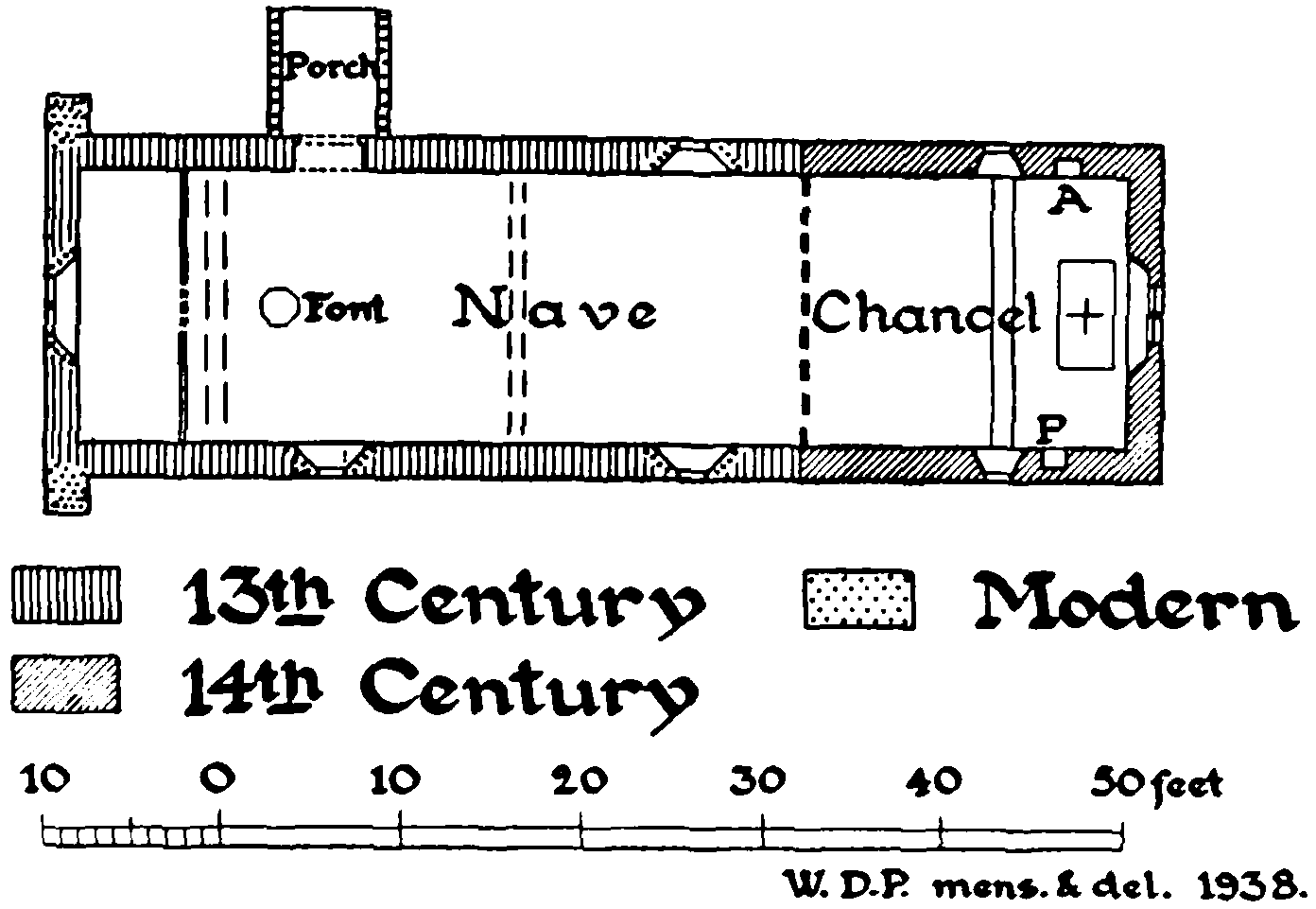A History of the County of Sussex: Volume 4, the Rape of Chichester. Originally published by Victoria County History, London, 1953.
This free content was digitised by double rekeying. All rights reserved.
'Earnley', in A History of the County of Sussex: Volume 4, the Rape of Chichester, ed. L F Salzman (London, 1953), British History Online https://prod.british-history.ac.uk/vch/sussex/vol4/pp201-203 [accessed 19 April 2025].
'Earnley', in A History of the County of Sussex: Volume 4, the Rape of Chichester. Edited by L F Salzman (London, 1953), British History Online, accessed April 19, 2025, https://prod.british-history.ac.uk/vch/sussex/vol4/pp201-203.
"Earnley". A History of the County of Sussex: Volume 4, the Rape of Chichester. Ed. L F Salzman (London, 1953), British History Online. Web. 19 April 2025. https://prod.british-history.ac.uk/vch/sussex/vol4/pp201-203.
In this section
EARNLEY
The parish is separated on the south from East Wittering by the Broad Rife, except at one point where it crosses that stream to reach the sea coast. Most of the eastern boundary, adjoining Sidlesham, is formed by another small stream which joins the Broad Rife; but the northern portion, representing the former parish of Almodington, is bounded by a road from Bachmere's Farm, just in Birdham parish. Here an 18th-century octagonal tapering windmill, covered with weather-boarding, is now disused but was still in active use in 1939. On the west, near Hundredsteddle Farm, the bounds of Earnley are curiously intermixed with those of the Witterings. The church, Manor Farm, and a few cottages are grouped at the centre of the parish round the junction of three lanes.
MANORS
In 780 Oslac, Duke of the South Saxons, gave to the church of St. Paul (presumably the cathedral of Selsey) a piece of land known as 'Earnaleach and Tielesora'. (fn. 1) Subsequently, in 930, King Athelstan granted to Bishop Beornheage of Selsey land at Medmerry in Selsey 'with the woodland and fields lying therewith called Erneleia'. (fn. 2) EARNLEY is not named in the Domesday Survey, being possibly then included in Wittering. It is probably represented in the return of knights' fees of the Bishop of Chichester in 1166 by the holding of William de Lancing, who with three others held I complete fee, (fn. 3) as towards the end of the 12th century William de Lancing, son of William and Maud, gave to his uncle Luke de Ernele 2 hides in Earnley as ¼ knight's fee, less 1 virgate, (fn. 4) and this gift was confirmed by his daughter Bertha. (fn. 5) Accordingly, a later Luke de Ernele is found c. 1260 responsible for maintaining 2 perches of the paling of Aldingbourne Park, an amount representing 2 hides. (fn. 6) The bishop's feodary of c. 1290 shows 2 hides at Earnley attached to Preston and held by Ingelram de Brok; (fn. 7) they were held by his heirs in 1300 (fn. 8) and by Niel de Brok in 1310, (fn. 9) and later by the family of Radmylle—Richard in 1398, Ralph in 1403, and William in 1479. (fn. 10) This perhaps indicates a mesne lordship, as the estate seems to have remained in the Ernele family. John de Ernele, son of Luke, (fn. 11) held the manor in 1284; (fn. 12) he or his younger son John had a grant of free warren here in 1318; (fn. 13) another John conveyed the manor to John Michelgrove and Joan his wife in 1427, (fn. 14) but in 1431 and 1432 it was in the hands of William Ernele. (fn. 15) In 1467 the manor was settled for life on John Lunsford and Margaret his wife, widow of John Ernele, (fn. 16) and in 1480 John Ernele, afterwards Attorney-General and Chief Justice, conveyed it to John Clerkson the elder and John Inglere, great-grandsons of John Ernele. (fn. 17) The manor is next found in 1495 in the hands of Thomas Combe and Elizabeth his wife, in her right, and they in that year conveyed it to Edward Barttelot. (fn. 18) In 1561 a later Edward Barttelot conveyed the manor to George Fenner, (fn. 19) who in 1564 transferred it to Richard Erneley, whose namesake in 1630 sold it to Richard Taylor. (fn. 20) He died in 1633 seised of the manor of Earnley, having a young son Richard Taylor, (fn. 21) whose son Richard in 1695 sold it to Robert Smith. (fn. 22) The descent is then unknown, but Sarah Stuart of Chichester, spinster, held it in 1752. (fn. 23) It seems to have come to the family of Skelton and to have passed to coheiresses, as in 1773 Sarah Skelton, John Baylis and Sarah, Thomas Sanden Dupuis and Martha, Robert Gibson and Susan, Mary Skelton, and Edward Howes and Margaret conveyed the manor to Edward and Francis Diggens. (fn. 24) Shortly afterwards, in 1777, it was in the hands of John Slade and Elizabeth his wife, (fn. 25) and it remained in this family until 1830, when William Slade and Elizabeth conveyed it to William Woollams Holland, clerk. (fn. 26) In 1877 the manor was owned by 'the Rev. Mr. Willett', (fn. 27) whose trustees held it in 1934. (fn. 28)

Ernele. Argent on a bend sable three eagles or.
ALMODINGTON
ALMODINGTON is not named in the Domesday Survey but was presumably part of the Bishop of Chichester's manor of Sidlesham and may be represented by the 3 hides held in 1086 by Gilbert. (fn. 29) In 1166 Hugh de Almodington with four others held 1 knight's fee of the bishop. (fn. 30) The Aldingbourne park paling list of c. 1260 shows that Walter de Almodington held 3½ hides, (fn. 31) which were held, under Sidlesham, in c. 1290 by the heir of Ernis de Almodington. (fn. 32) This was probably John, who figures in 1296 as one of the larger tax-payers in the Manhood. (fn. 33) Walter de Almodington held the 3½ hides in 1300 and 1310, (fn. 34) and both he and his mother Clemence, widow of John, (fn. 35) appear in the subsidy lists of 1327 and 1332. (fn. 36) In 1337 Robert son of Walter recovered the manor of Almodington against John de Almodington the elder and younger, John and Richard de Ernele, and Joan daughter of John de Ernele. (fn. 37) Robert alienated it to Sir John de Arundel. (fn. 38) Robert's younger brother John apparently left a widow Alice (who in 1367 sued Edward St. John and Joan his wife for ⅓ of the manor) (fn. 39) and eventual coheirs Joan wife of Thomas Shypwright and Agnes wife of Richard Rumbregger, and in 1397 they claimed that Sir John had disseised them of ⅓ of the manor; Sir John, however, died before the case was concluded. (fn. 40) His wife Elizabeth, Lady la Zouche, received dower in this among other manors. (fn. 41) The next Sir John de Arundel died, holding the manor of the Bishop of Chichester, in 1422, (fn. 42) and leaving a son John, then only 13, and accordingly in 1428 the ¼ and 1/8 knight's fee in Almodington was in the king's hands. (fn. 43) Almodington then descended with the earldom of Arundel, being among the manors settled in 1566 by Henry, Earl of Arundel, on his daughter Jane and her husband Lord Lumley. (fn. 44) The demesne lands of the manor, however, had been demised by the earl in 1558 to Robert Tyll, whose daughter married William Rishton, who died in 1583. (fn. 45) His son Robert died in 1623, holding these lands and Lee Park in Almodington, (fn. 46) and part of the estate passed with his daughter Catherine in marriage to Richard Taylor, who died in 1633. (fn. 47) On the death of his grandson John Taylor in 1700 this estate was sold to Sir Edward Turnour (fn. 48) and descended to Earl Winterton.

Earnley Church
CHURCH
The church (invocation unknown) stands south-west of the manor house; it consists of chancel, nave with bell-cote, and north porch, and is built of rubble with ashlar dressings, except the porch, which is of wood on a stone base; it is roofed with tile, (fn. 49) the bell-cote has tile-hung sides and shingled pyramidal roof. The nave is apparently 13th-century, the chancel 14th, the porch is modern.
The east window of the chancel is of two lights with trefoil heads surmounted by a quatrefoil; on each side of the chancel is a one-light window with ogee trefoil head and segmental rear-arch; in the south wall is a piscina with ogee trefoil head, and in the north a rectangular wall-locker; these are all of the 14th century. The roof is modern, ceiled under the rafters and collars with boarding. In place of a chancel arch is a modern arch-shaped wooden truss.
The nave has a (modern) buttress at each west corner; there are two lancet windows in the south wall and one in the north, all modern. The north doorway has plain jambs and pointed arch, perhaps 13th-century; under the sill of the window opposite are the jambs of a former south door, narrower than the north; this suggests that the principal entrance was always on the north. The west window is of two pointed uncusped lights with a pierced triangle between them, under a semicircular head, probably modern. A small vestry is screened off at the west end. The roof, except at the west under the bell-cote, appears to be ancient, having three trusses, each of two principals and a collar; to the middle truss a modern tie-beam has been added; there are two purlins on each side and ogee windbraces under the upper; the underside of the rafters is ceiled in plaster.
The communion table has plain turned legs; the altar rails have turned balusters; both are perhaps 17th-century. The font is a plain octagon on an octagonal base, of uncertain date.
There is one bell, dated 1788. (fn. 50)
The registers begin in 1562.
ADVOWSONS
The advowson of the church of Earnley was in the hands of the prebendary of Sidlesham between 1400 and 1444, (fn. 51) but its earlier and later history is obscure. It was a very poor living, worth only £4 6s. 8d. in 1291, (fn. 52) which was also the value of the rectory of Almodington. (fn. 53) The advowson of the latter went with the manor, (fn. 54) the Bishop of Chichester presenting between 1400 and 1405 during the minority of John son of Sir John de Arundel, (fn. 55) and the king during another minority in 1421. (fn. 56) Both benefices were among those 'unserved because of poverty' in 1513, (fn. 57) and in 1526 Almodington was united to Earnley, (fn. 58) the joint rectory being valued in 1535 at £7 5s. 11d. (fn. 59) From this time on the Bishop presented on the first and third vacancies and the Duke of Norfolk (in right of Almodington) on the second, (fn. 60) until about 1877 when the duke's turn was acquired by the rector, the Rev. J. Clements. (fn. 61) In 1907 Miss Clements held this turn, but in 1924 the benefice was united with East Wittering, in right of which living the third turn is now held by the Bishop of London. (fn. 62)
During the Commonwealth period, in September 1656, a proposal to unite the parish of Earnley with that of East Wittering was approved; (fn. 63) but nothing was done about it until the scheme was revived and carried out in 1924. (fn. 64)
The Rev. Edmund Cartwright, who completed the History of West Sussex left unfinished by Dallaway, was Rector of Earnley from 1804 until his death in 1834, holding that meagre benefice with other preferments. (fn. 65)
CHARITY
Ann Butler by her will dated 11 March 1874 bequeathed £200 to the churchwardens, the income to be given to the aged poor of the parish; but only the sum of £40 17s. 7d. was received in respect of the bequest. The annual income of the charity amounts to 18s. 4d.